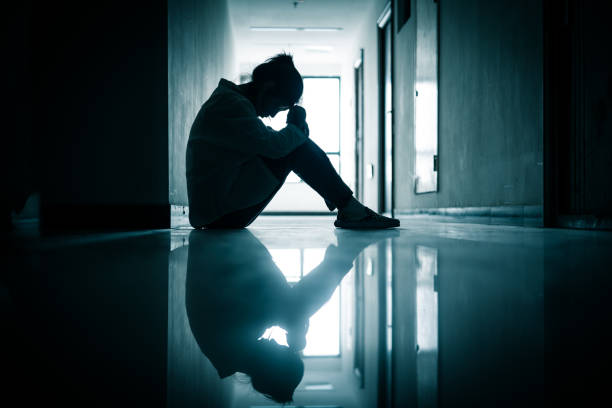Chemicals in sanitary pads causing danger says study

According to research conducted by a Delhi-based environmental NGO, popular sanitary napkins supplied in India have substantial levels of chemicals related to heart disease, diabetes, and cancer. Phthalates, which are included in sanitary pads, are known to induce reproductive damage and are also thought to be cancer-causing issues.
The havoc of phthalates in sanitary pads.
Phthalates, which are contained in sanitary pads, are known to be cancerous and induce reproductive damage to the body of the user. Phthalates have also been linked to reproductive problems, earlier puberty in girls, thyroid and asthma problems. The list also includes endocrine disruption, heart and reproductive systems, diabetes, certain malignancies, and birth abnormalities.

Shattering the myth that organic pads are healthier.
Organic and inorganic, all types of sanitary napkins have given a positive test towards the presence of phthalates. The study discovered that the greatest concentrations of phthalates were identified in self-proclaimed ‘organic’ sanitary napkins. VOC exposure raises the risk of cognitive damage, asthma, impairments, some malignancies, and reproductive system dysfunction. According to the study, finding substantial amounts of VOCs in all organic samples was alarming, shattering the myth that organic pads are healthier.
The examination details.
Toxics Link, an NGO, confirmed the existence of phthalates and particulates in 10 samples, 6 inorganic and 4 organic sanitary pads on the market. The results were presented in the study ‘Menstrual Waste 2022.’ A total of ten samples were analyzed, and the findings for VOCs and phthalates were weight-wise (µg/kg) and then adjusted to pad-wise values. A pad’s average weight was estimated to be roughly 10 grams. The phthalates DIBP, DBP, DINP, DIDP, and others were taken into consideration in the menstruation pads.

The stated regulations.
DIDP, a kind of phthalate, has the highest quantity of any phthalate at 19,460 micrograms per kilogram (g/kg) in a self-claimed organic napkin. According to the study, concentrations of a mixture of phthalates were found to be 0.0321 and 0.0224 grams in an organic and an inorganic sample, correspondingly, which is larger than the 0.1% by weight of the product permitted by EU standards.
Sanitary napkin specimens were examined for the search of 25 volatile organic compounds (VOCs), including substances such as chloroform, acetone, benzene, toluene, and others discovered in both inorganic and organic samples. There is a mounting worry that some of the compounds included in sanitary pads may be harmful to users’ health.
The present situation of menstruators.
Menstruators, or people who menstruate, need safe menstruation products that allow them to go about their regular lives without extreme constraints. According to the report, disposable sanitary napkins are currently the most popular menstruation products globally. Many menstruators employ sanitary napkins as their first option for an estimated 1,800 days in their lives.
Women all over the world use a range of items to absorb menstrual flow. These are known as menstruation products in general. Sanitary pads, tampons, menstrual cups, and period panties are among them. These goods are either discarded or reusable in nature. The items chosen by women differ depending on their expertise, preferences, availability, and simplicity of purchase.

Among other developments in recent years, synthesized plastic materials have been introduced to sanitary napkins as a liquid absorbent to improve functionality and comfort. Another added element to sanitary napkins is the scent, which is expected to give a sense of freshness to the user.
This addition of fragrances includes the use of compounds such as synthetic musk, which is a possible hormone disruptor, as well as cancer-causing substances such as methyl eugenol, pyridine, styrene, and butylated hydroxyanisole,” the report noted.
The report also mentioned the case of South Korea, where 15,000 women filed a lawsuit as a group against the sanitary pad manufacturer Lilian after experiencing negative health impacts from using their product. Rashes, irregular periods, cramps, and infection plagued these ladies. The brand was pulled off the market as a result of the litigation.
The point of concern.
Chemical exposure via sanitary pads is a major concern due to the exposure route area, i.e. the vaginal region, and the long-term time of exposure. The vagina, being a mucous membrane, may secrete and absorb fluids at a greater pace than the skin.
What is the anticipated line of action?
- To begin with, the research suggests that a comprehensive examination be conducted into the involvement and possible influence of VOCs and phthalates in menstruation products used by menstruators.
- Second, the government authorities and standard-setting bodies should develop guidelines for chemicals employed in the production of sanitary solutions.
- Third, companies should be required to reveal the list of product elements.
- Fourth, ethical advertising implies that companies offer pertinent product information and proper cautions.
- Finally, the report suggests legislation and programs encourage the substitution or decrease of certain chemicals in goods.
The parting message.
The research provided several suggestions with respect to the examination, highlighting that menstruators need access to clean and safe menstruation products available and then have the right to question what they have been subjected to.
Edited by Prakriti Arora




